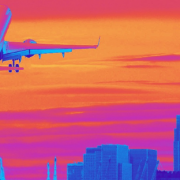Travel industry leaders explain how they plan to meet their carbon targets
This month, world leaders are gathering in Glasgow to determine policies and commitments to reduce global warming, reverse climate change and ameliorate the effects of greenhouse gas emissions.
Leading the way in these efforts are some of the world’s leading airlines and travel suppliers, including Global Travel Management.
We asked a number of airlines and travel companies to tell us how they intend to meet their emission targets. And we asked them to do so in a very brief video clip. Below, you can see each of the responses.
First was British Airways who intend to meet their self-imposed target of net zero emissions by 2050 thanks to fuel efficient aircraft, carbon offsetting and sustainable aviation fuel.
Lufthansa Group aims to cut its CO2 emissions by 50% by the end of this decade as a step to becoming net zero by 2050. Kevin Young explains how passengers can select the way their preferred method of delivering these targets.
United Airlines aims to become carbon neutral by 2050 by using sustainable aviation fuel, carbon sequestration and the use of new aeroplanes, including electric aircraft.
Emirates intends to drive down CO2 emissions by the use of modern, fuel-efficient aircraft, as well as the use of more efficient logistical and operational techniques, such as the use of ground-supplied power where possible.
Air Canada highlights aircraft and engine efficiency as the most important factor in driving down greenhouse gas emissions.
And it’s not just airlines that are driving down carbon emissions in the travel sector. Travel data supplier Travelogix is on track to becoming net zero as soon as 2025, including the exclusive use of green, renewable energy across global data centres.
You can find out more about the GTM Carbon Offset Programme, above.














